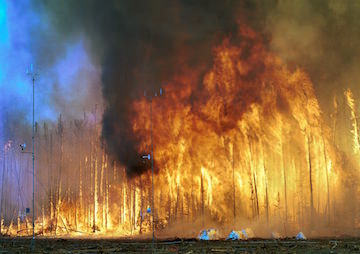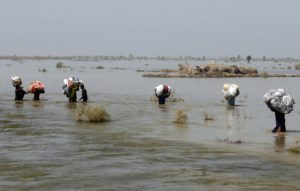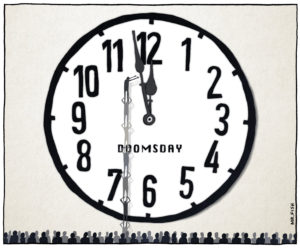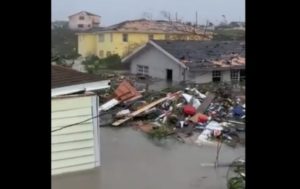Wildfire Threat Spreads Across a Warming World
As climate change warms the world, vegetation dries, rain-free days increase and fire seasons lengthen. It's a recipe for devastating wildfires.
By Tim Radford, Climate News Network

An experimental forest fire burns in Canada, where fire suppression costs are mounting. (Permission of the USDA Forest Service via Wikimedia)
This Creative Commons-licensed piece first appeared at Climate News Network.
LONDON — Wildfire — nature’s way of turning fallen vegetation into the next season’s nutrients — is a growing hazard. In the last 35 years, the wildfire season has grown longer by a fifth, and wildfire is now a threat to one fourth of all the plant-covered land on the planet.
US researchers report in Nature Communications that since 1970 the number of days without rain has increased by well over one day every decade.
William Jolly of the US Forest Service in Missoula, Montana and colleagues say they examined the fire season worldwide for the study period, taking into consideration all the factors that are used to calculate fire hazard: wind, humidity and temperature, as well as rainfall levels.
They found that the combined changes in the surface weather have meant that the fire season has increased so far by 18.7%
Worldwide, wildfires sear, scorch or incinerate about 350 million hectares of ground cover every year. Changes in the rainfall patterns were a factor, with the number of rain-free days increasing by 1.31 days per decade. The season of smoke and cinders and smouldering stumps had been extended almost everywhere.
Lower humidity
The average temperature on land that could support vegetation — for obvious reasons, the researchers did not include Antarctica or Greenland or the most arid desert zones — had increased by 0.185°C per decade and relative humidity, a measure of moisture in the air, had dropped 0.217% per decade.
Throughout Africa, the season of weather that carried a risk of fire was extended, and in Europe there were longer summers of greater risk in Spain, Portugal, France, Italy, Greece and Latvia.
In 2010 Russia had its worst fire season in recorded history, and in eastern Canada in the same year drier seasons and greater temperatures led to huge fires. Between 1979 and 2013, the Mediterranean forest fire season grew 29 days longer.
The largest increase was in South America, where the season was extended by 33 days in 35 years. Peat fires in Indonesia in 1997-98, following a drought induced by that cyclic weather phenomenon El Niño, released carbon dioxide emissions that added up to somewhere between 13% and 40% of global fossil fuel emissions — but from just 1.4% of the planet’s total vegetated land area.
Fires play a role in natural ecosystems, and some landscapes — the maquis (thick evergreen scrub) of southern Europe, the mulga forests of Australia and the chaparral of western North America — are adapted to periodic but not frequent visitations of fire.
But, say the researchers, there has been a recent surge of “extremely destructive fires with corresponding social disruption and substantial economic costs.” The annual bill for fire suppression cost the US $1.7bn over the last decade, and US$1bn in Canada. In just one year, 2005, fire losses in Australia added up to US$9.4bn, or just about 1.3% of the nation’s gross domestic product.
Endangered conifers
Researchers have identified wildfire as an increasing hazard everywhere. But in the US there has been repeated concern about risks in California and other parts of the American west.
But the research team also noted that the danger of fire had spread to the temperate conifer forests of the northern Rockies, while South America’s tropical and subtropical forests and savannahs had all seen “tremendous” fire season changes. And in 2005, a rare drought in the Amazon basin meant that even the rainforests were damaged.
“We have shown that combined surface weather changes over the last three and a half decades have promoted global wildfire weather season lengthening,” the authors conclude.
“If these trends continue, increased wildfire potential may have pronounced global socio-economic, ecological and climate system impacts.”
Your support matters…Independent journalism is under threat and overshadowed by heavily funded mainstream media.
You can help level the playing field. Become a member.
Your tax-deductible contribution keeps us digging beneath the headlines to give you thought-provoking, investigative reporting and analysis that unearths what's really happening- without compromise.
Give today to support our courageous, independent journalists.






You need to be a supporter to comment.
There are currently no responses to this article.
Be the first to respond.